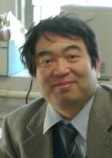报告人 Mitsumasa Iwamoto 教授 Tokyo Institute of Technology
报告题目 MODELING AND VISUALIZATION OF CARRIER MOTION IN ORGANIC FILMS BY OPTICAL SECOND HARMONIC GENERATION
报告时间 2011年8月22日 (星期一) 上午10:00
报告地点 理化大楼一楼科技展厅
报告摘要
Probing and modeling of dynamical motions of electrons and dipoles in organic materials is a fundamental research subject in science and electronics. According to the Maxwell’s electromagnetic field theory, electrons and dipoles are source of electric field, and materials surrounding electrons and dipoles are thus polarized. By probing dielectric polarization phenomena induced by dipoles and electrons, we can visualize and model carrier motion in organic materials and in device. Maxwell’s displacement current (MDC) method allows directly to probe orientational dipolar motion in monolayes, e.g., Langmuir-monolayer, where charge induced on suspended electrode is monitored as a Maxwell-current. On the other hand a novel optical method based on electric field induced optical second harmonic generation (SHG) is available for directly probing the dynamical electron (and hole) transport as the migration of electric field, where nonlinear polarization induced in materials originating from injected carriers is visualized. In this presentation, firstly basic concept for probing dynamical carrier motions, i.e., electrons and dipoles, by using dielectric polarization phenomena is discussed. Then some of experimental results are reviewed, and carrier motion is modeled based on our experimental findings: For dynamical carrier motion of electrons and holes, experiments making use of time-resolved SHG (TRM-SHG) technique reveals dynamic changes of SHG intensity profiles, e.g., arising from pentacene, and visualizes the diffusion-like carrier transport in organic field effect transistor (OFET). Results show that carrier transfer in OFET is regulated by the interface charging propagation. Calculation using drift-diffusion equation well accounts for the probed carrier motion by TRM-SHG. This SHG experiments are also employed for probing carrier motion in Organic light-emitting diodes (OLEDs), and finally show that OFET and OLED are analyzed as a system of Maxwell-Wagner effect element. For dynamical dipolar motion, MDC experiments coupled with BAM method motivates us to analyze dipolar motion by using orientational order parameter with consideration of dipolar energy. Shape equation that accounts for quantized domain shape of dipolar monolayers is presented. Finally, we conclude that experiments and analysis based on dielectrics physics is a very effective way for analyzing carrier behaviors in organic monolayers as well as in organic thin film devices.

Dr. Mitsumasa Iwamoto |
With an aspiration to contribute a little bit to the mankind by touching what is the first and only can be done by myself, it is fortunate for me to study organic molecules which have a strong chemical image despite of the affiliation of Electronics Department. Once touching molecules, I unexpectedly got acquaintance with them through an electronical sense which could not be thought of by chemist origin. This is the reason why the displacement-current measuring technique and the preparation method of polimide LB film and monolayers was created and had become the property of our laboratory. With the confidence that we are taking an express way, we tackle research by exchanging ideas with people from different fields and from overseas.If one wants to do something creative, it is necessary to experience jumping into some fields with completely different ways of thinking though it may have no relation with him at first. Lots of opportunities are available to give full play to one's creativities in our lab as we are studying organic molecules from the viewpoint of electronics and physics.
Mitsumasa Iwamoto.jpg
